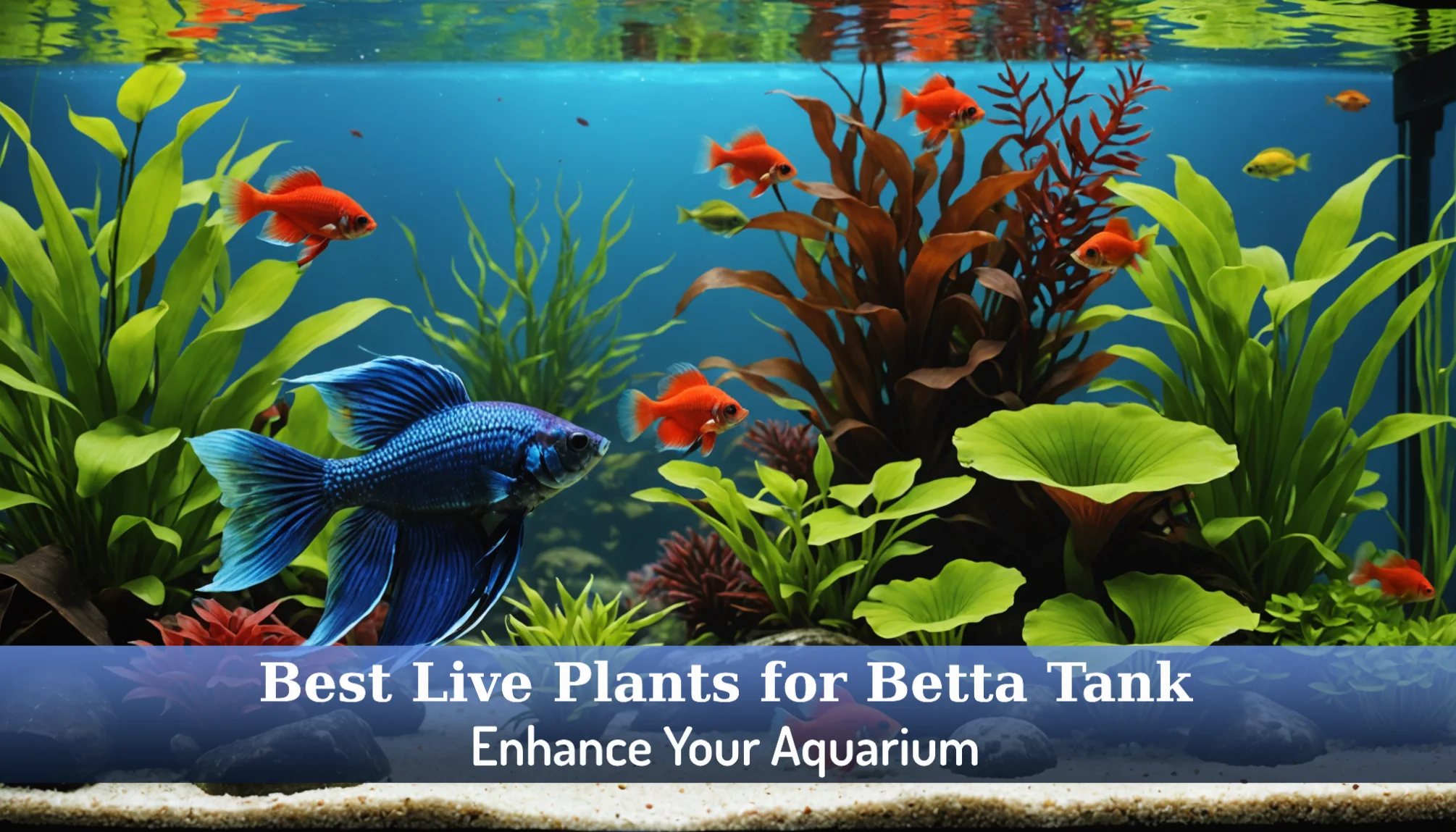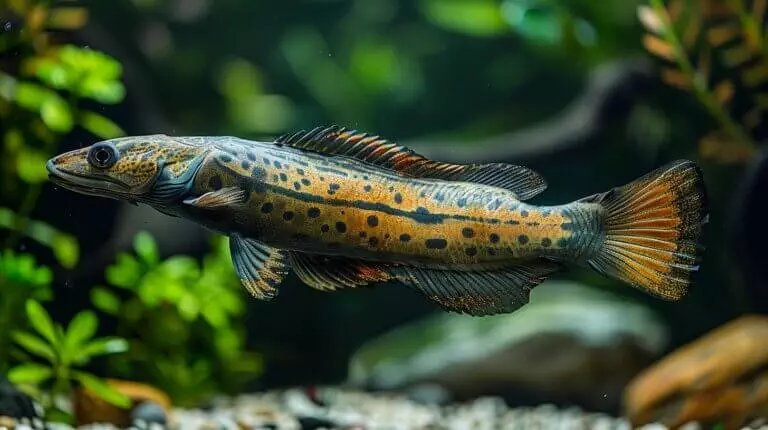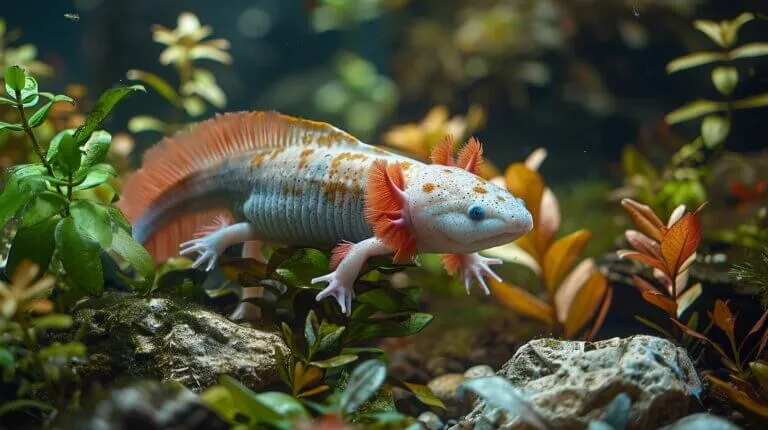Your betta fish deserves a stunning home, and the best live plants for betta tank setups can make that happen! These vibrant aquatic plants not only enhance the beauty of your aquarium but also create a safe and natural environment for your finned friends. Without the right plants, your betta might feel stressed or bored, which could affect their health and happiness.
In this article, we’ll dive into why live plants are essential for your betta tank, exploring the many benefits they provide, like improved water quality and natural hiding spots. You’ll also discover five fantastic plant options that are safe and perfect for your betta’s habitat. Plus, we’ll share tips on how to care for these plants to keep your tank thriving! Get ready to transform your aquarium into a lush oasis that your betta will love!
Quick Recommendations:
- Marcus Fish Tanks: Provides a beautiful, easy-to-maintain freshwater aquarium environment.
- HIRO AQUATICS: Ideal for beginners seeking a beginner-friendly floating aquarium setup.
- CANTON AQUATICS: Enhances your aquarium with vibrant red root floaters for a natural look.
- CANTON AQUATICS: Perfect substrate for aquascaping, promoting healthy plant growth in aquariums and terrariums.
- SubstrateSource: Offers high-quality Microsorum pteropus substrate for lush, thriving aquarium plants.
Why Live Plants Are Essential for Betta Tanks
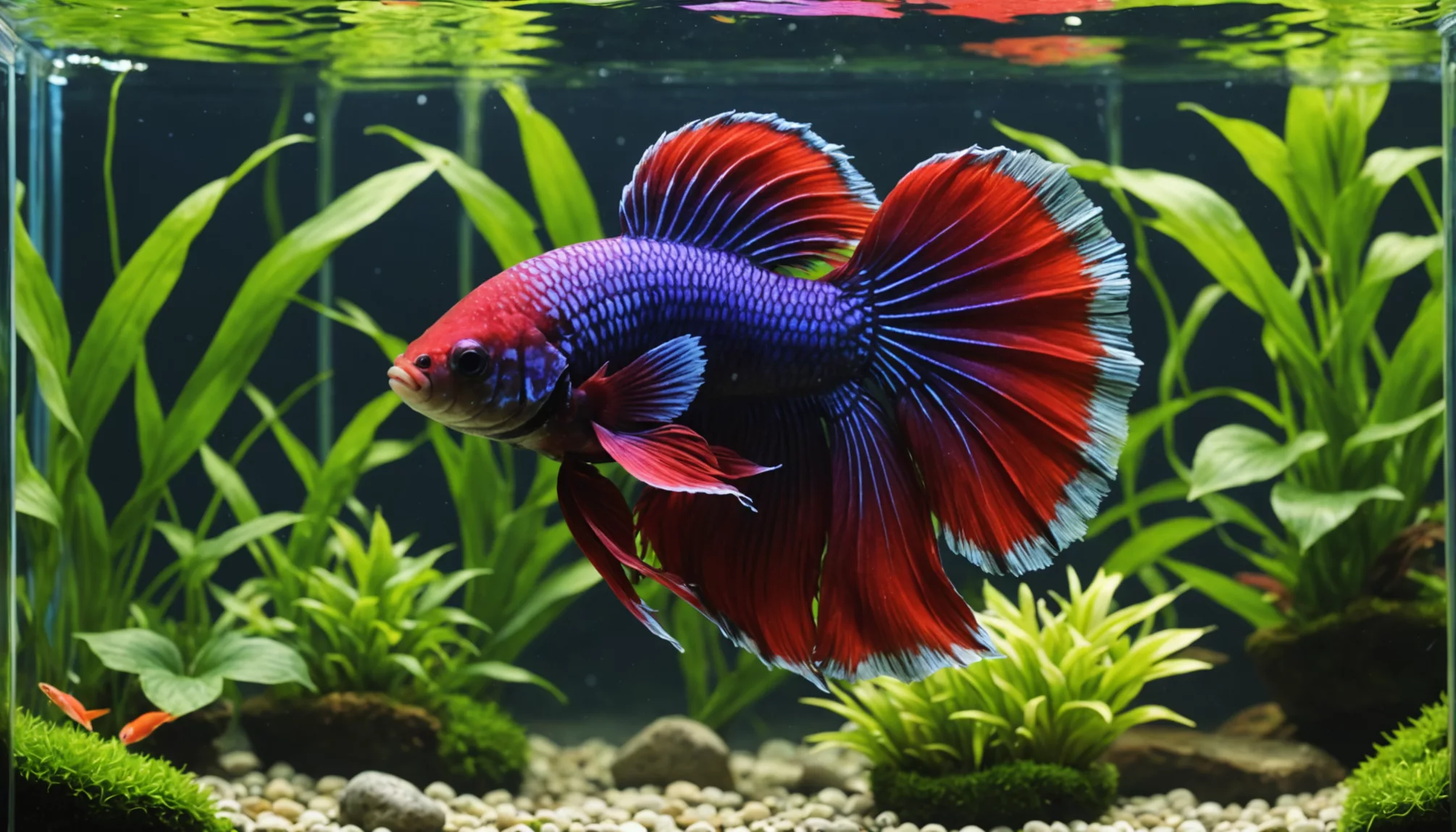
Live plants transform betta tanks into thriving ecosystems that benefit both fish and environment. These natural additions create an authentic habitat while providing crucial biological support for tank health.
The Benefits of Live Plants for Betta Fish
Live plants act as natural filters in betta tanks. They absorb harmful toxins and release oxygen, creating cleaner water for bettas. Java Fern and Anubias thrive in low light, making them perfect choices for most setups.
Plants give bettas places to hide and explore. This natural cover helps reduce stress and promotes normal swimming and resting behaviors. The leaves and stems create zones that make bettas feel secure in their space.
Aquatic plants also maintain tank balance by consuming excess nutrients. This process prevents algae growth and keeps water parameters stable. The result is a cleaner, more balanced environment for bettas.
How Live Plants Improve Tank Environment
Plants work with beneficial bacteria to create a balanced ecosystem. Together, they break down waste and maintain water quality through natural processes. This partnership keeps the tank healthy without chemical additives.
Through photosynthesis, plants produce oxygen during daylight hours. This continuous oxygen supply benefits bettas and other tank inhabitants. Plants also help regulate temperature by creating stable microzones within the tank.
Natural Habitat Mimicry
Wild bettas live in shallow waters filled with dense vegetation. Adding live plants recreates this natural setting. The familiar environment helps bettas feel secure and promotes natural behaviors.
Plant coverage reduces aggressive tendencies in bettas. The leaves and stems create visual barriers and territory boundaries. This setup prevents stress and helps bettas remain calm in their space.
Featured Plant Options
- Echinodorus (Amazon Sword): Broad leaves provide excellent cover
- Frogbit: Floating plant that creates natural shade
- Java Fern: Hardy plant ideal for beginners
- Anubias: Low-light plant perfect for small tanks
- Red Root Floaters: Natural surface coverage
5 Best Live Plants for Betta Tanks

Live plants transform betta tanks into thriving ecosystems. These top selections provide natural shelter and improve water quality while creating a stunning aquatic display.
Comparison Table
| Image | Product Name | Key Features | Best For | CHECK PRICE |
|---|---|---|---|---|
 | Marcus Fish Tanks | • Durable and stylish design<br>• Built-in filtration system<br>• Spacious for various freshwater species | Freshwater aquarium enthusiasts | CHECK PRICE |
 | HIRO AQUATICS | • Easy setup for beginners<br>• Floating design saves space<br>• Integrated LED lighting | Beginner aquarium owners | CHECK PRICE |
 | CANTON AQUATICS | • Vibrant red root floaters<br>• Natural look enhancement<br>• Easy to maintain | Enhancing aquarium aesthetics with live plants | CHECK PRICE |
 | CANTON AQUATICS | • High-quality aquascaping substrate<br>• Promotes healthy plant growth<br>• Versatile for aquariums and terrariums | Aquascaping and terrarium setup | CHECK PRICE |
 | SubstrateSource | • Premium Microsorum pteropus substrate<br>• Supports lush plant growth<br>• Easy to use and maintain | Thriving aquarium plants | CHECK PRICE |
1. Marcus Fish Tanks
Echinodorus plants adapt easily to various water conditions, making them perfect for betta environments. Their broad leaves create natural resting spots and hiding places. The plants absorb excess nutrients while releasing oxygen into the water.
Key Benefits:
- Tolerates diverse water parameters
- Creates natural shelter zones
- Improves water quality naturally
2. HIRO AQUATICS
Frogbit floats gracefully at the surface, creating dappled light patterns below. These floating plants excel at removing excess nutrients and providing shade that bettas love. Their hanging roots offer additional exploration spaces.
Key Benefits:
- Natural shade creation
- Superior nutrient absorption
- Minimal maintenance needs
3. CANTON AQUATICS
Red Root Floaters add stunning color while serving essential functions. Their crimson roots dangle attractively while providing cover. The dense surface growth helps maintain stable tank conditions.
Key Benefits:
- Vibrant red coloration
- Dense surface coverage
- Natural hiding spots
4. CANTON AQUATICS
This specialized substrate forms the foundation for healthy plant growth. It provides essential nutrients while anchoring roots securely. The material maintains ideal conditions for both plants and beneficial bacteria.
Key Benefits:
- Rich in plant nutrients
- Promotes root development
- Supports beneficial bacteria
5. SubstrateSource
Java Fern thrives attached to driftwood or rocks, adding vertical interest to tanks. Its tough leaves resist damage while providing safe resting spots. This low-maintenance plant grows steadily without special care.
Key Benefits:
- Attaches to decorations
- Durable leaf structure
- Simple care requirements
Each plant selection enhances betta habitats through natural filtration, shelter creation, and aesthetic appeal. Together, they create the optimal environment for betta health and happiness.
How to Care for Plants in a Betta Tank
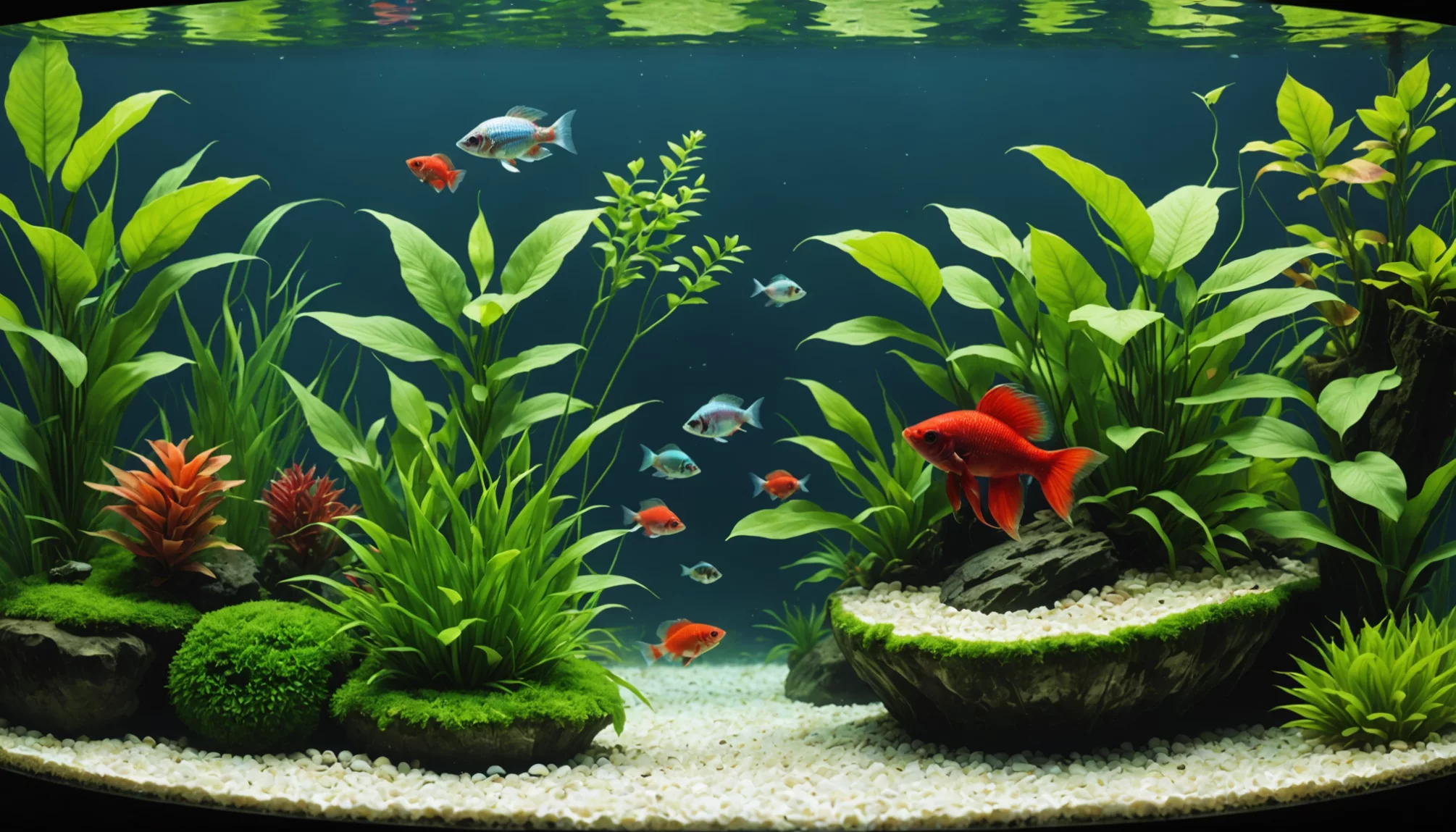
Creating a thriving planted betta tank requires understanding the essential care requirements for aquatic plants. Here’s a comprehensive guide to maintaining healthy plants that benefit both the tank ecosystem and its inhabitants.
Essential Plant Care Guidelines
Monitor water parameters weekly to maintain ideal conditions:
- Keep pH levels between 6.5-7.5
- Test ammonia, nitrites, and nitrates regularly
- Maintain water temperature between 75-80°F
Provide appropriate lighting for healthy growth:
- Install LED aquarium lights designed for plant growth
- Set timers for 10-12 hours of daily illumination
- Position tank away from direct sunlight
Use proper nutrients and fertilizers:
- Add liquid fertilizer formulated for aquatic plants
- Include root tabs for heavy-feeding species
- Dose according to plant needs and tank size
Light and Nutrient Requirements
Tank plants need specific conditions to thrive:
Lighting Essentials:
- Medium-intensity LED lighting works best
- Red and blue spectrum lights promote growth
- Adjust brightness based on plant species
Critical Nutrients:
- Nitrogen supports leaf growth
- Phosphorus aids root development
- Potassium strengthens plant structure
- Iron prevents leaf yellowing
Planting and Maintenance Tips
Follow these best practices for healthy plant growth:
Proper Planting:
- Anchor roots firmly in substrate
- Space plants 2-3 inches apart
- Group similar species together
- Use aquatic plant substrate
Regular Maintenance:
- Remove yellowed or dead leaves promptly
- Trim overgrown sections monthly
- Clean plant surfaces gently
- Check root health during water changes
Common Issues to Watch:
- Algae growth on leaves
- Root rot from poor substrate
- Nutrient deficiencies
- Light burn symptoms
Citations: Aquariumcoop
Common Misconceptions About Plants for Bettas

Do Aquatic Plants Compete with Betta Fish?
Live plants create a thriving environment for betta fish without competing for resources. These natural additions improve water quality by absorbing excess nutrients and reducing harmful algae growth. Plants provide essential hiding spots that help bettas feel secure and display natural behaviors. The relationship between plants and bettas creates a beneficial partnership that enhances the overall tank ecosystem. (Absolutelyfish)
Are there Unsafe Plants for Betta Tanks?
Not all aquatic plants are safe for betta tanks. Sharp-edged plants can damage delicate betta fins, while certain species like Water Hyacinth contain toxic compounds. Safe options include Anubias and Java Fern, which feature soft leaves and sturdy stems. These plants create ideal resting spots near the water surface where bettas love to explore. Before adding any plant, research its characteristics to ensure betta safety.
Clarifying the Float vs. Submerged Plant Debate
Floating and submerged plants each serve unique purposes in betta tanks. Floating plants like Frogbit create natural shade and help maintain stable water temperatures. Submerged plants such as Java Fern boost oxygen levels and filter the water. A combination of both types creates the most balanced habitat. This mix allows bettas to access different water levels while enjoying various plant benefits.
Key Benefits of Live Plants for Bettas:
- Filter harmful compounds from water
- Create natural hiding spots
- Provide resting areas near surface
- Maintain stable tank conditions
- Reduce stress through environmental enrichment
Creating the Ideal Betta Tank Setup with Plants
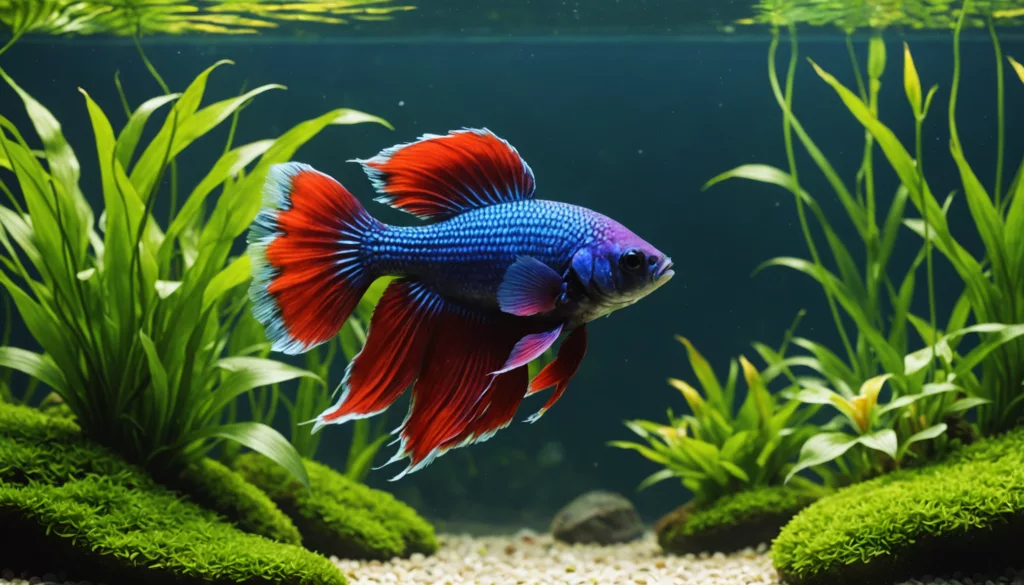
Live plants transform a basic betta tank into a thriving ecosystem. A well-planned setup enhances water quality, reduces stress, and creates a natural environment where bettas flourish.
Designing Your Aquarium for Betta Comfort
Bettas thrive in tanks that balance open swimming areas with secure hiding spots. A thoughtful plant arrangement creates this ideal environment while maintaining essential sight lines.
Key design elements include:
- Tall background plants like Echinodorus for natural barriers
- Mid-height plants for exploring and resting zones
- Open swimming channels between plant groups
- Floating plants like Frogbit for shade and cover
- Dense areas for retreat and territory marking
Combining Live Plants with Betta-Friendly Decor
Natural decor enhances the planted tank environment while ensuring betta safety. Proper integration creates a cohesive habitat that supports natural behaviors.
Essential combinations:
- Smooth driftwood pieces anchoring Java Fern
- Rounded stones supporting Anubias growth
- Strategic plant gaps around decorative elements
- Floating plants above resting spots
- Soft-leaved species near common swimming paths
How to Introduce New Plants Safely
Proper plant introduction prevents stress and maintains tank stability. Following a systematic approach ensures successful integration of new plants.
Safe introduction steps:
- Quarantine plants in separate container for 7 days
- Remove packaging and rinse thoroughly
- Trim damaged leaves and inspect for pests
- Plant during regular tank maintenance
- Monitor betta behavior for 48 hours
Common signs of successful plant integration:
- Regular swimming patterns continue
- Betta explores new plants calmly
- No stress stripes or hiding behavior
- Normal eating habits maintain
- Plants show new growth within weeks
Conclusion
Adding live plants to your betta tank is one of the best ways to create a happy and healthy environment for your fish! These plants not only improve water quality but also mimic the betta’s natural habitat, helping to reduce stress and encourage natural behaviors. With great options like Marcus Fish Tanks and HIRO AQUATICS, you can easily find the best plants that provide both beauty and benefits.
By taking care of your aquatic plants and understanding how they interact with your betta, you’ll create a vibrant underwater world for your fish to thrive. So, get excited about your aquarium journey! Dive deeper into the fascinating world of aquatic plants and discover even more ways to enhance your betta’s home!
FAQs
1. What are the best live plants for a betta tank?
The top five live plants for betta tanks enhance both water quality and fish wellness:
- Java Fern – Perfect for beginners with low maintenance needs
- Anubias – Provides excellent hiding spots with broad leaves
- Amazon Sword – Creates natural shelter with its tall structure
- Water Wisteria – Helps maintain water quality through nutrient absorption
- Floating Plants (like Frogbit) – Offers shade and surface coverage
These plants create a natural environment that mirrors the betta’s native habitat while requiring minimal care.
2. Do live plants benefit betta fish?
Live plants provide essential benefits for betta fish health and happiness:
- Filter harmful compounds from water
- Release oxygen through photosynthesis
- Create natural hiding places
- Reduce stress through territory marking
- Support natural behaviors like bubble nest building
Research shows that bettas in planted tanks display more natural behaviors and experience less stress than those in artificial environments.
3. How should beginners care for aquatic plants?
Follow these simple steps for healthy tank plants:
- Light Requirements
- Provide 8-10 hours of moderate light daily
- Use LED aquarium lights for optimal growth
- Water Care
- Test water parameters weekly
- Keep temperature between 75-80°F
- Change 25% of water monthly
- Maintenance
- Remove yellow or brown leaves promptly
- Trim plants when they grow too large
- Add liquid fertilizer as directed
4. Which plants should be avoided?
Several plants pose risks to betta fish:
- Plants with sharp edges that can tear fins
- Non-aquatic plants sold as underwater plants
- Toxic varieties like certain lilies
- Plants requiring high-intensity light
- Species needing complex care routines
Always research plant species before adding them to a betta tank.
5. How can new plants be safely introduced?
Follow this safe introduction process:
- Rinse plants gently in dechlorinated water
- Remove any dead or damaged portions
- Plant firmly in substrate or attach to decorations
- Monitor water parameters for the first week
- Watch betta behavior for signs of stress
This method helps prevent contamination and ensures smooth transitions.
Last update on 2025-04-17 / Affiliate links / Images from Amazon Product Advertising API

